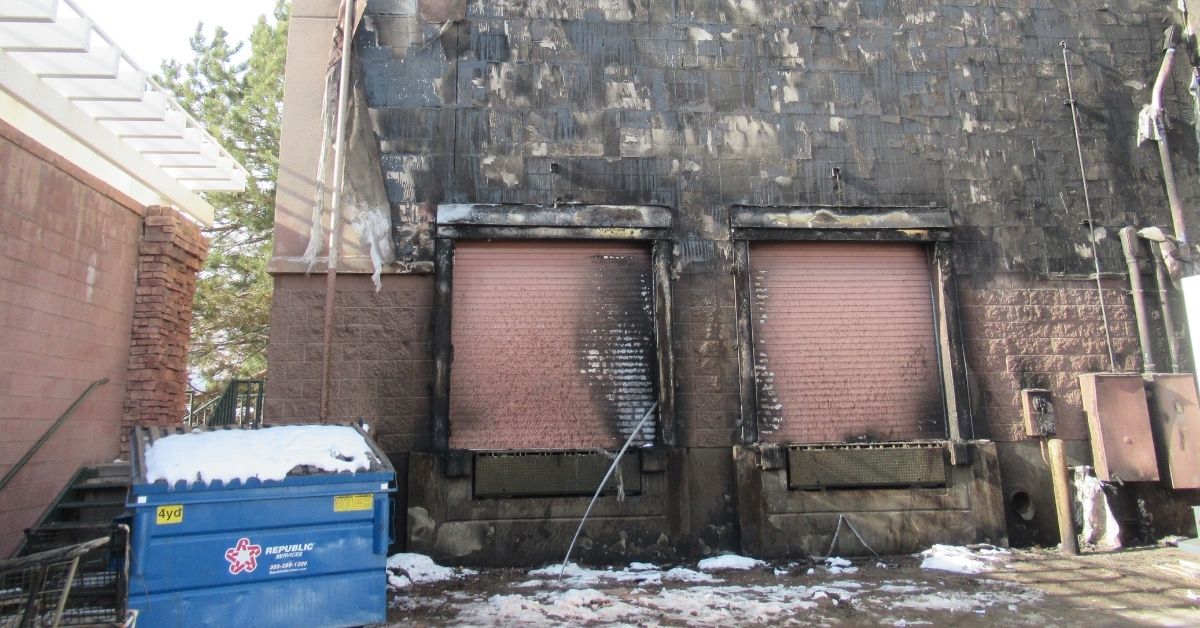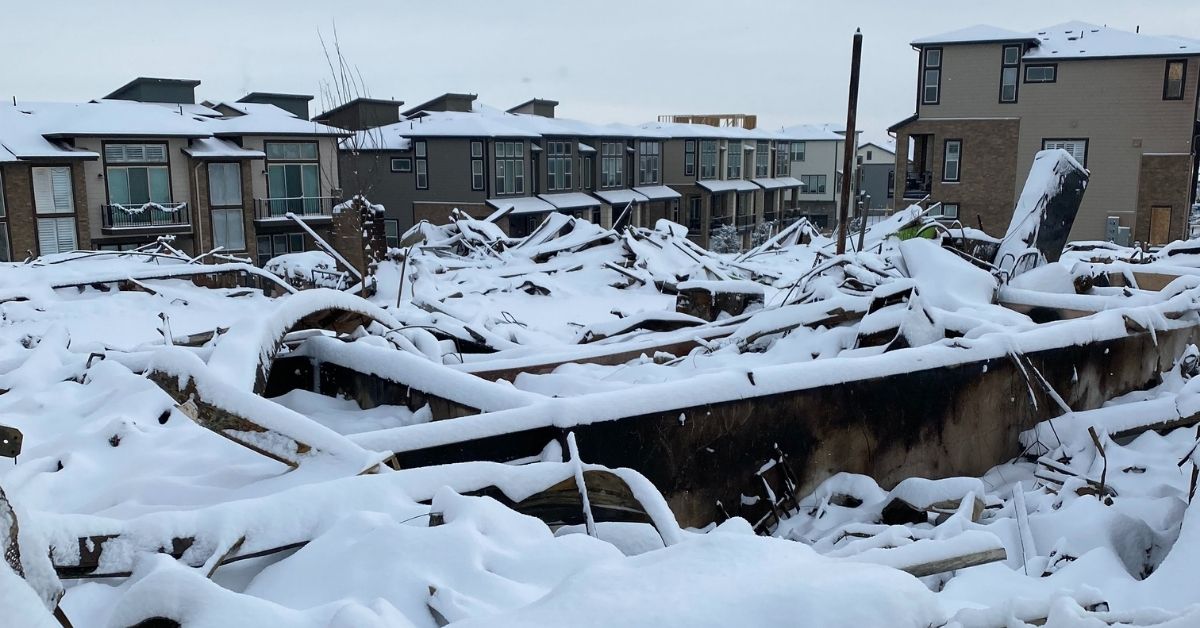By Darren Bautista and Jared Verstraete | Published May 4, 2022
In just over an hour, a fierce wildfire spread all the way from Eldorado Springs to Louisville, Colorado, flattening retail outlets, shopping malls and 1,000 homes.
Rebuilding any disaster-stricken area can be a challenge, especially with business owners desperate to reopen and homeowners living in hotels, and/or temporary rental properties. The nearby shopping center, home not only to Costco and Target, but also OfficeMax, Ulta Beauty, and multiple small retail businesses is at a crossroads. In addition, residents are mourning the loss of their community and support system.
Unfortunately, the required cleanup is extensive. RMC Group expects that rebuilding will not really begin for at least 18 months. Even then, with local real estate prices rising and many residents underinsured, the question of affordability is a serious consideration.
3 Insights from Assessing Buildings Damaged in the Marshall Fire
The rebuilding opportunity resulting from the Marshall Wildfire can provide key insights into the challenges of building and renovating across the country. Here are three key takeaways that may apply to building damage cost estimates in 2022:
1. Prices are creeping upward.
Steel and metal prices are through the roof. Plywood – which hit a high of over $60/sheet last year – is still above pre-pandemic prices at $45-55/sheet. Overall, there is an increase of 6-10% across the board.
Usually, the winter is a slower time for builders. But with an influx of natural disasters across the country, there has been no down time this year. When timelines change it can also be an opportunity for builders to charge extra. The demand for materials is at an all-time high.

Consultants like RMC Group work with the insured’s contractor to reach an agreed scope of repair and repair cost to make the insured whole. But it’s risky to estimate more than a few months ahead. In the price volatility of the current market, many estimates are now only good for two to three weeks. If prices continue to rise, insureds could be left short of money. Or if prices come back down, the risk then is that insurance companies may overpay the claim.
2. The labor shortage persists.
Retail outlets want to reopen ASAP, yet the damaged space needs to be assessed for safety first and then cleaned up. Asbestos, lead, building collapse and other hazards are ever-present during catastrophes like these and if not performed properly, can cause serious injuries and even lead to major legal issues for all involved.
Unfortunately, the current labor market means it may be challenging to find enough qualified workers to do the cleanup. Some organizations/business owners are bringing people in from out of state, driving prices higher. Whether it’s the tenant or the owner that is responsible for footing the bill, a thorough cleanup is dependent on having enough labor.
Businesses that have performed their own cleaning are having mixed results. For example, a local Whole Foods was able to clean up their premises well. But others didn’t have the same luck. When one store who did their own cleaning turned the HVAC system back on, soot sprayed all over the store. They had to close the store down and start over again.
Similarly, utilities like heat and electricity can be problematic in the case of a widespread disaster. Until the utility companies take care of their own repairs, a strip mall will have to rely on generators to provide electricity and heat.

As a result, contractors are spending money on fuel for the generators and heaters, waiting on utility companies to do their part. Meanwhile, it’s quite costly to rely on generators to heat large retail spaces in the dead of the Denver winter.
3. Supply chains create additional obstacles.
The supply chain challenges resulting from the pandemic have resulted in rising material costs and reduced inventory. With increased demand and the above-mentioned labor shortage, expect to see higher insurance estimations for reconstruction projects.
In the case of the Marshall Wildfire, cleanup efforts for the entire neighborhood are imperative before even one property owner can begin to rebuild. With lingering ash and soot in the area, new construction can quickly become filled with the remaining damage if precautions aren’t taken.
Backordered materials, such as metal roof panels, fasteners, ridged insulation, etc., may not arrive for at least a year – and when they do arrive, the initial price will not be guaranteed. Today, most contractors and suppliers are guaranteeing pricing for just 10-14 days, rather than the 60-90 days they offered before the pandemic.
When it comes to estimating rebuilding costs, the best course of action is to be transparent about pricing, while knowing that costs may change on the back end if the shortage keeps up. In some cases, considering new options rather than replacing like-kind can be ideal. In either case, it’s important to decide in earnest and submit plans ASAP before building departments are overwhelmed by the spike in plan submittals. Additionally, a continually updated critical path schedule will be needed to keep the project on track.
Overall, partnering with an experienced and knowledgeable team for building consulting can make all the difference. Reach out to RMC Group for help with accurately identifying building damage repair scopes and preparing repair cost estimates.
This information is intended for informational purposes only. Each restoration project has unique properties and must be evaluated individually by knowledgeable consultants. RMC Group is not liable for any loss or damage arising out of or in connection with the use of this information.
